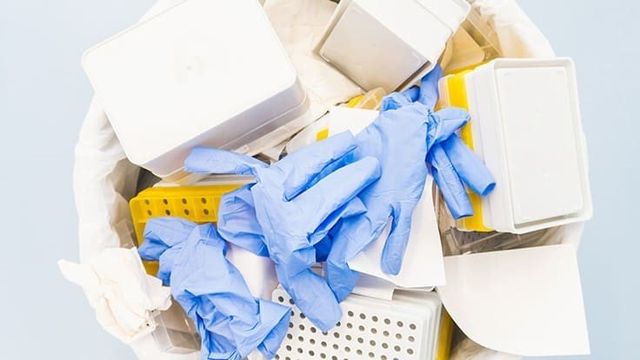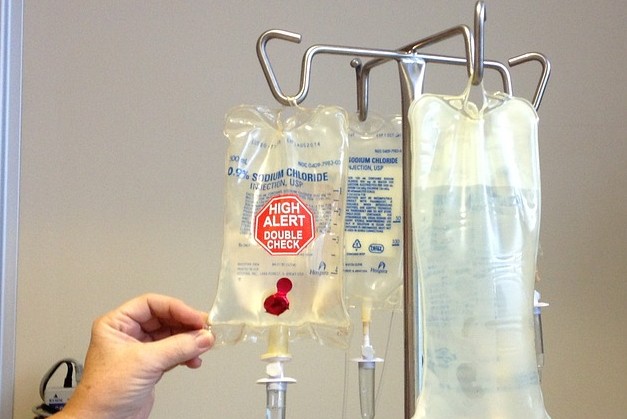Medical Waste Removal Mastery: Where Service Excellence Fulfills Health And Wellness Criteria
Wiki Article
Stay Ahead of Regulations: Professional Suggestions on Medical Garbage Disposal
In a world where the medical care sector is regularly progressing, it is imperative for clinical facilities to remain in advance of policies when it comes to the proper disposal of medical waste. From understanding the different groups of medical waste to carrying out the right collection and partition techniques, this conversation will certainly offer important understandings and actionable suggestions to help centers remain ahead of laws in the ever-changing landscape of clinical waste disposal.Understanding Clinical Waste Categories
Understanding medical waste groups is essential for appropriate disposal and management in healthcare centers. Clinical waste describes any type of waste created by health care tasks that might posture a risk to public wellness or the atmosphere. It is important to categorize medical waste properly to ensure its risk-free handling, treatment, transport, and disposal.There are a number of groups of medical waste that health care facilities require to be familiar with. The most usual categories consist of infectious waste, pathological waste, sharps waste, pharmaceutical waste, and chemical waste. Each classification has specific guidelines and guidelines for its correct management and disposal.
Infectious waste includes materials polluted with blood or various other bodily fluids, such as handwear covers, dress, and research laboratory cultures. Pathological waste describes human tissues, organs, or body parts that need special delivery and disposal. Sharps waste consists of used needles, syringes, and various other sharp things that can create injury and send infections. Drug waste comprises run out, unused, or contaminated medications that need cautious handling and disposal. Chemical waste includes solvents, anti-bacterials, and various other chemical materials used in health care facilities.
Remaining Up-To-Date With Regulatory Adjustments
Remaining present with regulative modifications is vital for healthcare centers to make certain conformity and appropriate monitoring of clinical garbage disposal. medical waste removal service. With laws constantly progressing, it is crucial for health care facilities to remain updated to prevent charges, penalties, and potential injury to the atmosphere and public healthTo stay in advance of regulative adjustments, healthcare centers should establish a system for tracking and monitoring updates. This can be done by signing up for regulative newsletters, attending workshops and conferences, and actively joining industry organizations. Additionally, centers need to mark an employee or group accountable for staying informed and disseminating info to pertinent stakeholders.
Regular communication with regulative agencies is also vital. Health care facilities ought to establish partnerships with regional, state, and government agencies to ensure they recognize any adjustments in laws that may impact their waste administration practices. This can be done with regular meetings, engagement in public comment durations, and proactive interaction with governing agencies.
Moreover, healthcare centers ought to think about partnering with waste administration firms that focus on medical garbage disposal (medical waste disposal services with WasteX). These companies are typically fluent in the current policies and can supply advice and support to make certain compliance
Carrying Out Proper Collection and Segregation Techniques
To properly manage medical waste disposal, healthcare centers need to establish proper collection and segregation techniques according to governing standards. Applying these approaches ensures the safe handling and disposal of possibly hazardous products, shields the setting, and decreases the threat of injuries and infections to medical click site care employees and the public.
Appropriate collection and segregation techniques involve using designated containers and labeling systems. Medical care centers must supply clearly labeled containers for various sorts of clinical waste, such as sharps, contagious waste, pharmaceutical waste, and non-hazardous waste. These containers should be color-coded and clearly significant to prevent confusion and advertise very easy identification.
In addition, medical care facilities should educate their personnel on the appropriate procedures for accumulating and setting apart medical waste. This consists of informing them on the different sorts of waste, the ideal containers to use, and the importance of adhering to laws and guidelines. Regular training sessions and refresher course courses need to be carried out to guarantee that team member remain updated on best techniques.
Additionally, healthcare centers should develop a system for regular collection and disposal of medical waste. This might include partnering with licensed waste administration companies that concentrate on clinical garbage disposal. These companies will make sure that the gathered waste is delivered and disposed of in conformity with regulatory needs.
Choosing the Right Disposal Techniques

Incineration is just one of one of the most common and effective techniques for taking care of certain types of medical waste, such as pathological waste and sharps. It involves the controlled combustion of waste at high temperatures, decreasing it to ash. Incineration can release damaging toxins right into the air and add to air pollution.

Chemical therapy involves the use of chemicals to decontaminate and neutralize the waste. Microwave treatment utilizes microwave power to heat and disinfect the waste.
Making Sure Compliance Via Documentation and Training
After carefully taking into consideration the appropriate disposal techniques for clinical waste, healthcare facilities have to ensure compliance with guidelines and minimize environmental effect by applying reliable documentation and training procedures. This action is essential in maintaining a secure and sustainable atmosphere for both healthcare employees and the public.
Healthcare employees who manage clinical waste should get ideal training on waste partition, handling, and disposal treatments. By supplying extensive training, healthcare centers can encourage their personnel to make informed choices and reduce the threat of inappropriate waste disposal.
Final Thought
Finally, remaining in advance of guidelines in clinical garbage disposal is critical for medical care facilities. medical waste removal near me. Recognizing the various categories of clinical waste, remaining upgraded with regulatory changes, applying proper collection and partition approaches, choosing the appropriate disposal techniques, and making sure compliance through documentation and training are all important actions. By following these guidelines, visit this site right here health care companies can successfully take care of and get rid of of medical waste in a accountable and risk-free mannerFrom recognizing the different groups of medical waste to executing the ideal collection and partition techniques, this discussion will certainly provide workable tips and important insights to aid centers remain ahead of guidelines in the ever-changing landscape of medical waste disposal. - medical waste disposal services with WasteX
The most common groups consist of infectious waste, pathological waste, sharps waste, pharmaceutical waste, and chemical waste. Health care centers should give plainly classified containers for different types of medical waste, such as sharps, contagious waste, pharmaceutical waste, and non-hazardous waste. Medical care centers ought to develop a comprehensive system to tape-record and track all aspects of medical waste disposal, including types of waste generated, amounts, and disposal methods used. Healthcare employees who handle medical waste needs to receive suitable training on waste partition, managing, and disposal procedures.
Report this wiki page